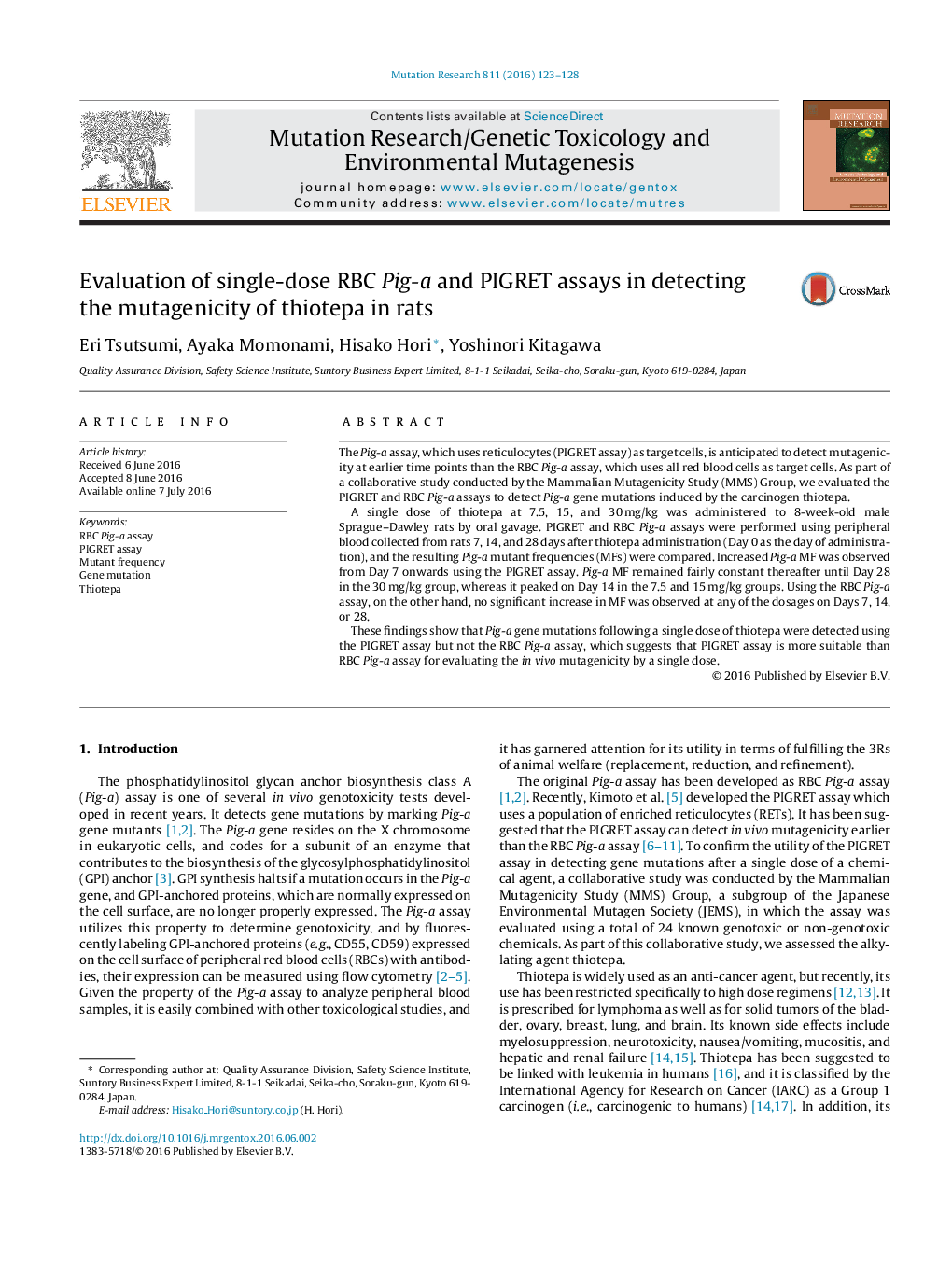| کد مقاله | کد نشریه | سال انتشار | مقاله انگلیسی | نسخه تمام متن |
|---|---|---|---|---|
| 5528778 | 1548559 | 2016 | 6 صفحه PDF | دانلود رایگان |

- We evaluated the PIGRET and RBC Pig-a assay in detecting thiotepa mutagenicity.
- Rats were treated with thiotepa by single oral administration.
- Same blood samples from the animals were used for both assay methods.
- Increases in Pig-a mutant frequencies were detected only by the PIGRET assay.
The Pig-a assay, which uses reticulocytes (PIGRET assay) as target cells, is anticipated to detect mutagenicity at earlier time points than the RBC Pig-a assay, which uses all red blood cells as target cells. As part of a collaborative study conducted by the Mammalian Mutagenicity Study (MMS) Group, we evaluated the PIGRET and RBC Pig-a assays to detect Pig-a gene mutations induced by the carcinogen thiotepa.A single dose of thiotepa at 7.5, 15, and 30Â mg/kg was administered to 8-week-old male Sprague-Dawley rats by oral gavage. PIGRET and RBC Pig-a assays were performed using peripheral blood collected from rats 7, 14, and 28Â days after thiotepa administration (Day 0 as the day of administration), and the resulting Pig-a mutant frequencies (MFs) were compared. Increased Pig-a MF was observed from Day 7 onwards using the PIGRET assay. Pig-a MF remained fairly constant thereafter until Day 28 in the 30Â mg/kg group, whereas it peaked on Day 14 in the 7.5 and 15Â mg/kg groups. Using the RBC Pig-a assay, on the other hand, no significant increase in MF was observed at any of the dosages on Days 7, 14, or 28.These findings show that Pig-a gene mutations following a single dose of thiotepa were detected using the PIGRET assay but not the RBC Pig-a assay, which suggests that PIGRET assay is more suitable than RBC Pig-a assay for evaluating the in vivo mutagenicity by a single dose.
Journal: Mutation Research/Genetic Toxicology and Environmental Mutagenesis - Volume 811, 15 November 2016, Pages 123-128